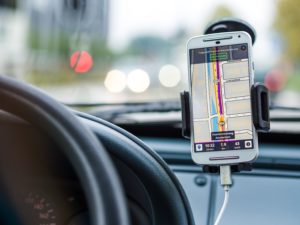Distracted Driving Comes in Many Forms
According to the National Highway Traffic Safety Administration, 3,166 lives were lost due to distracted driving in 2017. The Centers for Disease Control identify three types of distracted driving: cognitive, manual, and visual. Cognitive distraction refers to thinking about things other than driving; manual distractions cause a driver to remove one or both hands from the steering wheel; and visual distractions cause drivers to look away from the road.
Texting While Driving
There is no way that anyone who texts or manually dials a cell phone while driving can give full attention to operating the vehicle. Texting becomes a visual distraction as the driver takes his or her eyes off the road. This is true whether the motorist uses one or both hands to text. When individuals feel the need to text and drive, obviously their minds are not on driving. Texting while driving is said to be one of the most dangerous distractions because it’s possible to drive a distance that is the length of a football field during the time it takes to read or send a text message.
Eating While Driving
It’s not unusual for busy people to eat or drink while driving. Eating or drinking during driving requires removing at least one hand from the steering wheel and looking away from the road, so is very dangerous.
Talking While Driving
Excessive talking or arguing during driving creates a cognitive distraction. A driver who is deeply engaged in conversation may find it difficult to keep his or her mind on the road. Similarly, talking on the phone while using a hands-free option can distract a driver.
Driving When Tired
A driver who has been on the road for several hours or someone tired before taking the wheel can experience physical and mental fatigue. Being tired impacts good decision-making during driving as well as reaction time. An exhausted driver may doze or nap, which can easily lead to a serious accident.
Handling GPS or Media Controls
Manually entering information into a GPS or searching for a radio station while driving requires a driver to use at least one hand. Drivers who take their eyes off the road for a split second can cause deadly accidents. If possible, it’s better to let a passenger handle navigation duties, or plan your route ahead of time.
Applying Makeup
The rear-view mirror becomes an in-car vanity for drivers who apply makeup on their way to work. Like other distractions, applying makeup requires the use of at least one hand. It’s not uncommon to observe a driver looking into a rearview mirror while applying lipstick, combing the hair, and in some cases putting on mascara. Drivers accustomed to sitting in daily traffic jams on the way to work may see that time as the perfect opportunity to apply makeup, however, doing so can lead to a rear-end collision.
Attending to Children
Young children often become irritable and restless during car trips. Parents may look into a rearview mirror to see what is happening with a child in a back seat. A parent may also turn or reach toward a child to comfort him or her. Unfortunately, this can also lead to an accident.
Reaching for Items
Attempting to keep an item from falling from a seat or reaching for an item on the floor can also be dangerous distractions. Removing a hand from the steering wheel and stretching or reaching can result in a driver losing control of a vehicle.
Taking Legal Action Against Distracted Drivers
A Philadelphia accident attorney knows that distracted drivers responsible for accidents can pay a heavy price when they are responsible for injuring other people. When you drive, you must keep your eyes on the road, your hands on the steering wheel, and your mind on your actions. It is not only important to pay attention to what you are doing, but at a time when the roadways are busier than ever, you must also watch out for other drivers who may be distracted.
If you’ve been hurt by a distracted driver, you may be entitled to compensation for your damages. A Philadelphia accident attorney can help you navigate the legal and insurance issues that arise from a distracted driving-related accident. If you need legal advice regarding an accident caused by distracted driving, contact Metzer & Kleiner in Philadelphia at 215-567-6616. You can also reach our Lehigh Valley office at 610-435-7400.




Speak Your Mind